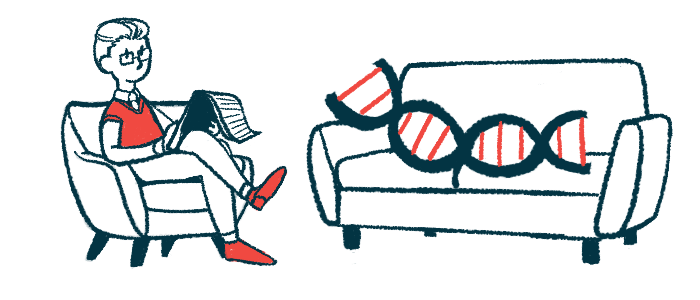Antibodies in Some Hem B Patients May Make Gene Therapy Not Work

Nearly one-third of people with hemophilia B have antibodies against a subtype of an adeno-associated virus (AAV) — called AAV6 — that is used as an experimental gene therapy carrier, a U.K. study found.
Because such antibodies could render the treatment that the carrier holds ineffective, these patients would likely be ineligible for clinical trials employing the vector, the researchers noted.
“Based on our findings, 70% of adults with hemophilia B in the UK would have serological [antibody] eligibility for gene therapy using a recombinant AAV6 vector,” the team wrote.
That means, however, that a gene therapy using AAV6 likely would not work for approximately 30% of the country’s hemophilia B patients.
The study, “Seroprevalence to adeno-associated virus type 6 in people with hemophilia B from a UK adult cohort,” was published in the journal Research and Practice in Thrombosis and Haemostasis.
Hemophilia B is caused by mutations in the F9 gene, which is responsible for making a blood-clotting protein called factor IX (FIX). The standard of care treatment is replacement therapy, where patients have the missing FIX infused into their bloodstream. While such treatment can be given on-demand or as a preventive therapy, patients generally will need repeated sessions over their lifetimes.
Gene therapies under investigation for the bleeding disorder aim to deliver a healthy copy of the F9 gene, restoring the production of FIX.
Such therapies are usually packaged into AAVs for delivery. This viral packaging enables the body’s cells — particularly those in the liver — to be “infected” with the healthy gene. That healthy gene is then integrated into a person’s DNA. The virus itself does not cause disease.
Various AAV subtypes have been established as safe and effective vectors for hemophilia B gene therapy. But some people may have antibodies against some of these subtypes as a result of previous exposures to naturally occurring AAVs. Such antibodies limit the effectiveness of any therapy in which they are used as carriers.
“It is important to establish the proportion of patients who may not be eligible for gene therapy with each AAV subtype as a potential viral vector,” the researchers wrote.
To learn more, a research team in the U.K. evaluated the prevalence of antibodies against the AAV6 subtype among adults with hemophilia B. All of the patients were treated at six hemophilia care centers in Great Britain between March and October 2019.
Included in the study were 49 men, with a median age of 43, who had received prior treatment with FIX replacement therapy. Hemophilia was considered severe in 27 of the men, moderate in 14, and mild in eight.
Blood tests revealed that 15 of the patients (30.6%) had AAV6 antibodies.
“Our study indicates that nearly one-third of patients would be not be eligible for participation in AAV6-mediated gene therapy trials with an exclusion criterion of demonstrable AAV6 immunity,” the researchers wrote.
Overall, the rates of immunity to AAV6 were similar to those observed in previous studies conducted in the U.K., the U.S., and northern Europe, the team noted. They added that the rates were also similar to those seen in other AAV subtypes, namely, AAV2 and AAV8.
All participants in this study had previously been treated with FIX replacement therapy. Prior to 2000, available FIX therapies were plasma-derived, meaning they came from human blood. After that time point, recombinant forms of the therapy, which are made in the lab, began to emerge. Recombinant therapies are thought to be safer, as they lower the risk of transmission of infectious agents through contaminated blood.
Although a detailed treatment history was difficult to obtain, there was no overall association between exposure to plasma-derived FIX replacement therapy and AAV6 antibodies. That likely means that the antibodies were generated through natural AAV exposure rather than contaminated blood products, the researchers said.
As such, “the frequency of immunity is unlikely to differ significantly as a larger proportion of the adult hemophilia population becomes plasma product naïve,” the researchers wrote.
In a secondary analysis, the team investigated whether exposure to hepatitis C — a liver infectious disease — influenced AAV6 immunity, but no significant association was found.
Sangamo Therapeutics, which has gene therapies under development for hemophilia, funded the study and provided experimental support for the analysis of blood samples.






